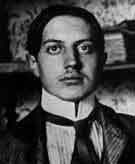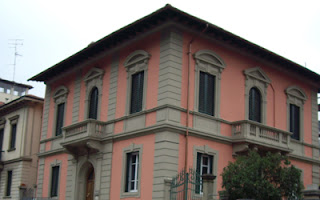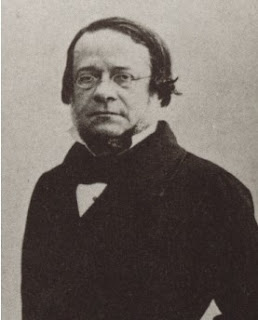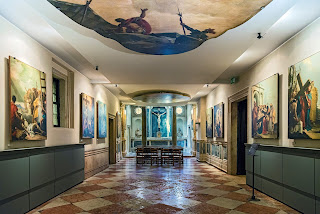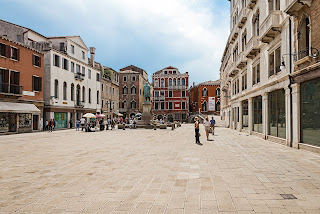Factory worker who shot to fame in Bicycle Thieves
 |
| Maggiorani with Enzo Staiola, who played his son, Bruno, in Vittorio de Sica's Bicycle Thieves |
Lamberto Maggiorani, who found overnight fame after starring
in the neorealist classic Bicycle Thieves (1948), was born on this day in 1909 in Rome.
Maggiorani was cast in the role of Antonio Ricci, a father
desperate for work to support his family in post-War Rome, who is offered a job
pasting posters to advertising hoardings but can take it only on condition that
he has a bicycle – essential for moving around the city carrying his ladder and
bucket.
He has one, but it has been pawned. To retrieve it, his wife, Marie, strips the
bed of her dowry sheets, which the pawn shop takes in exchange for the bicycle.
They are happy, because Antonio has a job which will support her, their son
Bruno and their new baby.
However, on his first day in the job the bicycle is stolen,
snatched by a thief who waits for Antonio to climb to the top of his ladder
before seizing his moment. The remainder
of the film follows Antonio and Bruno as they try to find the bicycle.
As a portrait of life among the disadvantaged working class in
Rome in the late 1940s, the film is hailed as a masterpiece, director Vittorio
de Sica and his screenwriter Cesare Zavattini fêted by the critics for turning
a little-known novel by Luigi Bartolini into a piece of cinema genius.
For Maggiorani, however, his participation was something of
a bitter-sweet experience.
 |
| An original poster from the 1948 movie |
De Sica, who had won an Academy Award two years earlier with
Shoeshine, attracted plenty of interest when news spread of his new project, with
one American producer willing to offer a lucrative deal to cast Cary Grant in
the lead role.
It did not interest De Sica, who was determined to be faithful
to the principles of the burgeoning neorealist genre be picking actors who would infuse his
characters with realism, regardless of whether they had any experience.
Maggiorani was not an actor at all, but a worker in a steel
factory. He had himself experienced unemployment as Rome and De Sica saw him as
perfect for the role of Antonio.
Delighted, Maggiorani accepted De Sica’s offer, taking time
off work for the filming. He was paid $1,000 dollars, the equivalent of about
$10,500 dollars (€8,800) today, with which he was able to give his family their first
real holiday and buy new furniture for their home.
His performance was magnificent. Sometimes, De Sica had to use
another actor to dub Maggiorani’s dialogue because his strong Roman accent was
occasionally hard to follow, but otherwise he was delighted with how his
unlikely protégé understood the way he wanted his character to be portrayed. The
critics hailed the arrival of a new star.
Yet once the fuss died down and his pay cheque was spent,
Maggiorani found his life had changed. One thousand dollars might have been a
large sum but it did not set him up for life.
 |
| The director Vittorio de Sica |
He went back to the factory, but when orders fell away he
was told he was no longer required, the perception being that he must be worth millions
of lire after his movie success and that there were others whose need for work
was greater.
Shunned by many of his friends, too, after failing to share his
perceived wealth, he went back to the movie industry, assuming he would be
offered more parts.
He was given some, but usually they were minor roles. Pier
Paolo Pasolini gave him a bit part in Mamma Roma, a film about a prostitute
trying to start a new life and starring Anna Magnani, but only because he
thought his name in the credits would raise the movie’s profile.
De Sica was reluctant to use him at all as anything but an
extra. Zavattini recognised and sympathised with his predicament and wrote a
screenplay entitled ‘Tu, Maggiorani’ about how non-professional actors such as
Maggiorani were sometimes used to execute one particular role and then cast
aside.
Maggiorani made 16 movies, the last one a comedy entitled
Ostia, directed by Sergio Citti and produced by Pier Paolo Pasolini, but none was particularly successful nor earned him much money.
He died at the San Giovanni Hospital in Rome in 1983 at the
age of 73, having never regained the standing he enjoyed with Bicycle
Thieves. It is ironic that the film has
recently been recognised as one of the greatest of all time.
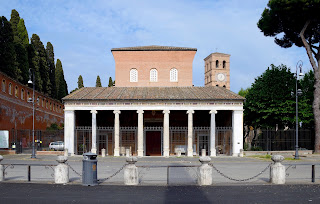 |
| The Basilica of San Lorenzo Fuori le Mura adjoins the Campo Verano cemetery |
Travel tip:
Lamberto Maggiorani is buried at the Cimitero Comunale
Monumentale Campo Verano, situated beside the Basilica of San Lorenzo Fuori le Mura, in the Tiburtino area of Rome. It is the city's largest cemetery, with some
five million internments. The name 'Verano' is thought to date back to the
Roman era, when the area was known as Campo dei Verani.
 |
| The San Giovanni Addolorata Hospital is built on top of Roman Ruins on Celio hill, south-east of the city centre |
Travel tip:
The hospital complex San Giovanni Addolorata, where
Maggiorani died, is on the Celio hill, an area of ancient Roman urban
settlements. Under the existing buildings are archaeological remains, including
the Villa of Domitian Lucilla, mother of Emperor Marcus Aurelius. Renovation work has also uncovered a villa
belonging to the powerful Valerii family, great landowners, which contained
historic mosaics preserved in perfect condition.



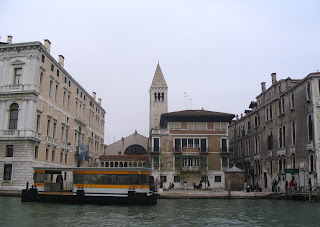



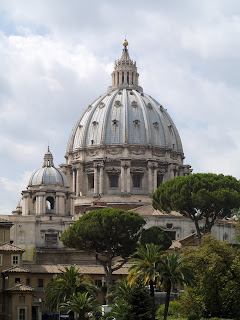





.jpg)





